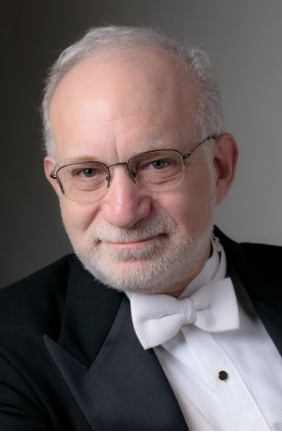The Italian Academy of Columbia University presents David Witten in Review
David Witten, piano
Music of Mario Castenuovo-Tedesco
The Italian Academy of Columbia University, New York, NY
November 17, 2018
In the imposing theater of the Italian Academy of Columbia University, pianist David Witten presented a remarkable and rare evening of solo piano music of Mario Castelnuovo-Tedesco, the occasion being the fiftieth anniversary of Castelnuovo-Tedesco’s death. (Two preludes by Debussy crept into the program, appropriately, because Castelnuovo-Tedesco was influenced by Debussy.) His solo piano music is not well-known, and deserves wider examination, especially when presented with such authority, and with the gorgeous tonal palette that Mr. Witten possesses. I consider Castelnuovo-Tedesco an “honorary” impressionist anyway—most of his music is programmatic, with illustrative titles and the like. He knew many of the great virtuosi of his time, often writing directly for them. His guitar music (due to Andrés Segovia) is probably his best-known output. Escaping Italy during the rise of Fascism, he emigrated to Hollywood, becoming the (often uncredited) composer of over 200 film scores; and leaving a legacy as a teacher, notably of André Previn and many others. Mr. Witten has recorded this music, and performed (and spoken delightfully about) it many times.
Mr. Witten began with the suite Le Stagioni (The Seasons), Op. 33 (1924): banish any and all memories of Vivaldi’s ubiquitous chestnut. Castelnuovo-Tedesco’s work begins with winter, and cycles through the other three, to which is added an epilogue of great wistfulness. There is an undercurrent of great sadness in this time cycle, which made me wonder if there is any biographical reason in Castelnuovo-Tedesco’s life for it. Later in his career, he had plenty of disappointments and setbacks, but this work seems too early for that.
This was followed by the Sonatina Zoologica, from the other end of his career (1960), a time of disillusionment with humans because, despite winning an opera competition, the promised premiere at La Scala was denied him. Hence, he turned to animals, adding three pieces to one extant work from 1916 to create a whimsical “little” sonata. Each creature (Dragonfly, Snail, Lizard, Ant) is so well-defined, and Mr. Witten knows absolutely how to control the sound levels so crucial for the success of this unusual repertoire. From an audience perspective, Castenuovo-Tedesco’s music is so engaging and accessible that one may easily forget how fraught with pianistic difficulty it is.
After intermission, Mr. Witten introduced two Debussy preludes from Livre II: Feuilles mortes (Dead Leaves), and Feux d’artifice (Fireworks), both of which he played with the command of a dedicated Debussyist.
He then returned to Castenuovo-Tedesco, with three of the Greeting Cards, Op. 170 based on musical “spellings” of each person’s name: Walter Gieseking (an early proponent of Castelnuovo-Tedesco’s solo piano music), André Previn, and Nicolas Slonimsky. Castenuovo-Tedesco devised his own “spelling system” simply by having an ascending chromatic scale of 26 notes, one for each letter of the alphabet, and 26 descending. From this he derived the theme for each recipient of a “card.” His command of different styles was enjoyable, from misty, quasi-French for Gieseking (renowned interpreter of Debussy and Ravel), to an authentic tango for Previn, and a more rigorous “not-quite” twelve-tone sounding homage to Slonimsky.
The satisfying concert closed with the Piedigrotta 1924 (Neapolitan Rhapsody), named for a church in Naples, where Castelnuovo-Tedesco and his wife honeymooned, that has an ancient Roman tunnel beneath it. Castelnuovo-Tedesco weaves together the folksongs of the region and characteristic musical gestures and forms, with a tarantella, moonlight, evocation of an early instrument, a poignant graveyard scene, and a concluding triumphal festival parade (including a cyclic return to the tarantella). Here, Mr. Witten’s tonal control was masterful, sorting through the heavily ornamental textures to clarify everything for the listener. An all-Castelnuovo-Tedesco recital may not be everyone’s cup of tea, perhaps it should be mixed in with other Italian composers of his generation and the one before, and other composers who influenced him. Nevertheless, in Mr. Witten’s capable hands, everything sounded inevitable and wonderful.
He was greeted with a well-deserved ovation.

